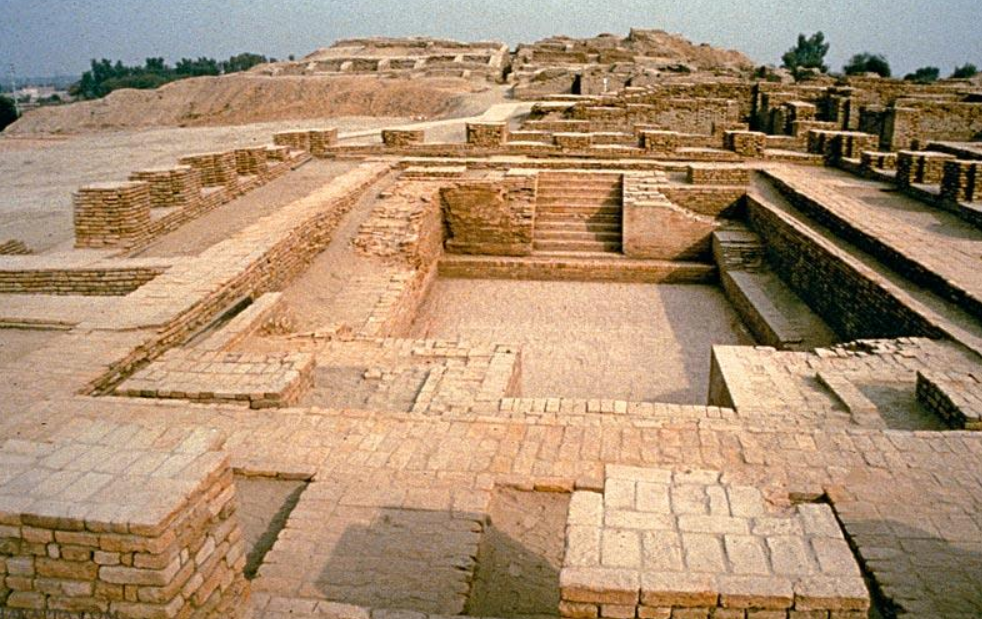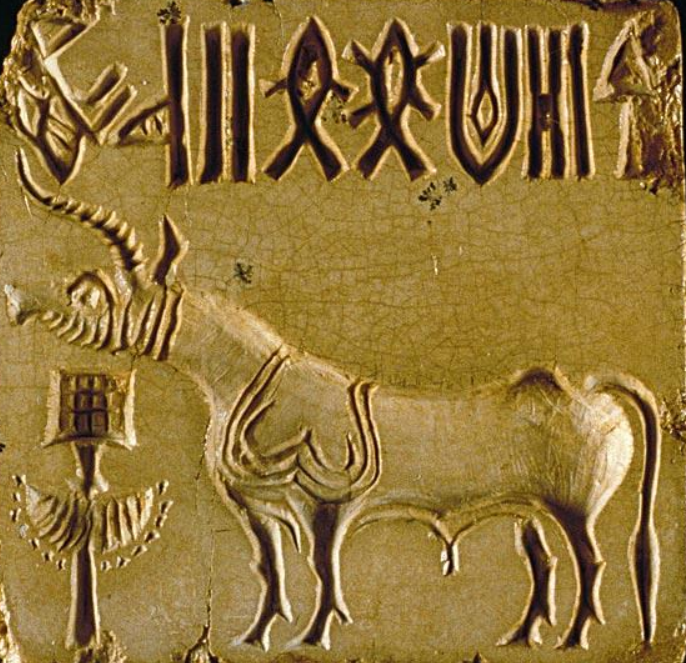16-Jun-2025
Harappan Civilisation
History
Why in News?
Archaeologists from the University of Kerala have discovered a 5,300-year-old Early Harappan settlement near Lakhapar village in Kachchh, Gujarat.
About Harappan Civilisation
Introduction to Harappan Civilisation
- Also called the Indus Valley Civilisation.
- Time span: 6000 BCE to 1300 BCE
- Early Harappan: 6000–2600 BCE (Formative)
- Mature Harappan: 2600–1900 BCE (Urban peak)
- Late Harappan: 1900–1300 BCE (Decline phase)
- Major artefacts: Seals (steatite), bricks (baked & unbaked), beads, copper & bronze tools.
Settlements and Planning
- Over 2000 sites found; majority in Saraswati-Indus region.
- Major cities: Harappa, Mohenjodaro, Rakhigarhi, Dholavira, Ganweriwala.
- Divided into Citadel (higher, possibly ceremonial) and Lower Town (residential).
- Notable site: Mohenjodaro had The Great Bath, warehouse, grid pattern streets, drainage system.
The Great Bath
Subsistence and Agriculture
- Crops: Wheat, barley, lentil, chickpea, sesame; millets in Gujarat; rice rare.
- Animals: Cattle, sheep, goat, buffalo, pig; wild species like boar and deer.
- Tools & techniques: Terracotta ploughs found (e.g., Kalibangan), canal traces (Shortughai), irrigation through reservoirs (e.g., Dholavira).
Society and Economy
- Burials: Generally simple; some had ornaments (e.g., shell rings, copper mirror).
- Artefacts
- Utilitarian: Pottery, querns, needles.
- Luxury items: Faience pots, gold jewellery, rare beads.
- Luxury artefacts mostly in major cities (e.g., Mohenjodaro), not in smaller ones.
Craft and Production
- Chanhudaro: Famous for bead-making, metal work, seals.
- Materials: Carnelian, jasper, shell, faience, terracotta.
- Centres like Balakot and Nageshwar specialised in shell objects.
- Waste material (e.g., stone chips) used to identify production sites.
Trade and Raw Material Procurement
- Sources
- Lapis lazuli (Afghanistan – Shortughai)
- Carnelian (Bharuch, Gujarat)
- Copper (Khetri, Rajasthan)
- Gold (South India)
- Oman (Magan): Harappan jars found; evidence of maritime trade with Mesopotamia.
- Meluhha (likely Harappan region) mentioned in Mesopotamian texts.
Seals, Script and Weights
- Seals: Carried symbols and writing; used for trade authentication.
- Script: Undeciphered; 375–400 signs; likely written right to left.
- Weights: Cubical chert stones, binary and decimal systems, standardised.
Harappan Seal
Decline of Harappan Civilisation: Probable causes were climate change, river shifts, overuse of resources.
Archaeological Discoveries
- Early explorer: Alexander Cunningham.
- Discovery
- 1921: Daya Ram Sahni – Harappa
- 1922: R.D. Banerji – Mohenjodaro
- 1924: John Marshall announces Indus Valley Civilisation
- Post-1947: Indian archaeologists focused on sites in India like Kalibangan, Lothal, Dholavir, Rakhigarhi.
Preparing Through MCQ
Q. Which site is famous for bead-making and metalwork in the Harappan Civilisation?
(1) Lothal
(2) Dholavira
(3) Chanhudaro
(4) Kalibangan
Answer: (3)


